Take a gander at our FTC disclosure opus here ...
Full Hatred 1-Hour Brown County Haul Of All The Ass Ride
Listen in as team TRO discuss tire logic, rally rides and Bessie Stringfield. Music by Rabid Neon and Otis McDonald. Download our feed here.
Transcript
As legible as we are intelligible ...
Robin: In this episode, too much is too much, and Jordan explores truth versus legend regarding the great Bessie Stringfield. It's finally time, Brian brought it up, and then we get to do this. Yeah, awesome. As for the hiatus, did you try powering it off and on again?
Brian: Did you hold down C when you rebooted? Port RAM reset. Yeah, so we're melting our solder over here, but hey, back in the saddle. The pod paradox is that we're too busy riding and doing motorcycle shit in the summer to talk about motorcycle shit in the evenings. We're just going to have to admit that we're going to lean into it. We'll do the best we can. One of the things is the podcast really helps us remain sane over the winter. Googly moogly. From what I've heard, and I'm hoping it's doing the same for people who listen, all three of you or however many.
Robin: The numbers say that we do. It's like basically when the winter hits hard up north, it's rough and they're in their garages. They've waxed the bike 15 times because there's nothing else to do and they're just waiting. Well, here we are. I promise you, Brian will speak coherently. I'll make a fool out of myself and we will keep you going through winter and vice versa. Have courage. We'll get through this together. Opening announcements, corrections, banter. We received an email through the website, abbreviation DO. DO loves the weather page and uses it constantly for checking conditions for riding. Hold you, Brian. They noticed an icon over the map that says download app, but it's not clickable on a smartphone. They want to support TRO more and wanted to give the heads up that there's a problem clicking it. Well, that is Ventusky. Ventusky. Sky, because it's weather? Maybe. Well, I call it Ventusky. V-E-N-T-U-S-K-Y dot com. We use Ventusky on the weather page for the actual map. Their free embed is what gives it an introductory bit of wow visually. There's a lot of animated data and numbers and all kinds of things you can use if you really want to. Below it is where TRO's algorithm starts to flex a bit and give you useful information. So the download app link you see is the Ventusky embed. TRO doesn't have an app. We found that while their map is cool and useful, it's hypersensitive to visitors and touch screens. So we covered it with an invisible shield so you can't really tap stuff. You know what I mean? Otherwise, visitors wouldn't be able to scroll down to the actual data we aim to provide. Sorry for the confusion. We're a little hacky over here. Can't get any better at coding when we're always riding our motorcycles. At any rate, if you want to help, money's always nice. Our donation page is donate.tro.bike. So don't go feeling obligated. I'm only mentioning it in case you wish to pour millions upon us and safe riding out there. Again, it says donate.tro.bike. That's how that works. Next announcement. Your maintenance logs now come with a self-cleaning backup system, whereby 10 backups for every bike are stored should you accidentally fry some info. Why? Because I certainly fried some of my info. All of my data is intact, minus the notes, which were full of tidbits, trials, and tribulations. If I personally have an oh-shit-what-the-fuck moment, I can download a zip file with 10 superhero rescue files in it, meaning somewhere back behind me is the data I lost. Yay.
Brian: Nice.
Robin: Now onto the banter. Between our last episode and now, everything has happened. And I'll tell you right now, I've gotten to see a lot of Brian who has gone way out of his way to help me out with the jigsaw.
Brian: It's also on a bike that apparently no one else on the planet has ever checked valves on before either. Or maybe like one or two guys in Timbuktu or New York or something. I don't know. Yeah. There's no info.
Robin: I took so many pictures and the few people that did provide info, even if their videos were speaking a different language than we're used to listening to, socially speaking, they did a good job and they helped us make it happen. So things got done and I cannot thank you enough. You know this, we drank well into the 4.30 in the morning hour and talked about all kinds of stuff, having just satisfied the need to get the bike up to snuff for next year. I doubt I'll need to check the valves or change the shims at least in 45,000 miles. I'm not going to check them for 30,000, that's for sure. So where are you right now, Robin? Home. As far as I'm concerned. I have two homes. They're either wherever my friends are, Brian in Nashville, Indiana, or Travis and the rest of the lot up in Madison, Wisconsin, but home, home, you know, there's two kinds of people. Avoid both of them. For me, that's truth or consequences, New Mexico. If I want to be away from everybody and have all the good roads to myself, nobody should come here. The roads here are bad. Don't do it. It's awful. I will be here hiding and you don't get to know anything about it. I may edit this out.
Brian: Stay away. There's nothing here.
Robin: I'm going to ask you first. Did you ride today?
Brian: I did ride today, but it was only a run to the grocery store during which I used my new Givi or is it Givi or Givi or Givi or there's got to be an Italian out there that can tell us. But anyway, uh, whatever the hell they are, they're Italian, uh, hard bags on the bike. So the, the ones I had on at the E21s were getting really, really ratty. They've been through a couple of different bikes are really old and they're beat up. I actually washed my bike and cleaned it and it's all shiny and it's very weird. It's a new feeling and the bags really stick out. So anyway, I've been playing on this while. So I ordered a set of new E22 bags, which are the updated version. They look great. I don't know if they discontinued them or what, but they're very short supply. So it took a few tries, but, uh, got to set, change out the locks. So everything matches on the bike. Which direction did you put them in? They're kind of low in the front and high in the back. And that's the direction I put them on. Okay.
Robin: That looks great. But I also think that that's iffy in terms of what is designated as front versus back. I don't think there's an honest, like, do they say this is the front, you know what I mean?
Brian: No, they can go on in any way you want, depending on the bike. And it just happens to follow the lines of the bike really well with the low end in the front. Well done. So the lid is high, is high on one side, low in the other, but the low end of the front. And as you can see, I actually washed and cleaned and polished up the bike. It's pretty amazing.
Robin: So you tortured yourself with the thing you hate most because the bags look too shiny and pretty to ignore.
Brian: Yeah. I've been planning on getting these for a while, but it's, it's, I finally did it. Like I even cleaned the sprocket. Can you see that?
Robin: Yes, I can, sir. I can see it.
Brian: I don't know what got into me.
Robin: Wait, so which way do they open? Are they opening? So when, from the rider position, can you reach back and lift them up and the air would drag the lid up? Or is it the other way around?
Brian: They're top loading and the hinges on the outside of the bag.
Robin: Oh, so they open like an X-Wing fighter.
Brian: Yeah. So like when I left one open, it's the same thing. It'll open the same way.
Robin: Congratulations. Your bike looks beautiful, which I've now ridden. Oh, that's right. Yeah. Under incredible personal duress, I rode that bike.
Brian: That's right. Yeah. So yeah, we had your bike starting to take it apart. We had to go get the parts for the valve check and didn't really think about that until it was almost too late. Suspension's a bit stiff for you, I'm sure. I enjoyed jumping it over speed bumps. Get all the air you want. It's good for it. Anyway. It was great. You know, since the last time we've recorded, I know we've both shagged a whole set of tires. Track day in Missouri, the Ark, a ride of hatred. General vengeance.
Robin: We'll get to that. That was amazing. Yeah. We'll talk.
Brian: Good time. The valves on your bike, then bourbon after that. So much bourbon. So much bourbon. And then tomorrow I'm going to Kentucky for, it's kind of the last get-together of the season for some of the Midwest people. Robin's schedule wasn't compatible with that, but we'll get by somehow. What about you, Robin? What's the big news? Big news.
Robin: Oh, Maggie is the proud owner of a 2018 Suzuki SV650 with barely 6,000 miles on it. There's a long story to that that may make an episode at some point, as soon as the conflicting emotions settle. But the fact of the matter is it is not an ABS bike. I blindly trusted that it was, even though I know how to look. I just didn't look. The deal is that it had so many other upgrades on it and is so beautiful that we decided to keep it. We're keeping it. It's just a nasty bike. And the way Maggie rides, she's going to be just fine. So she is excited. We've been riding every day. We have a 30-mile lunch route through the twisties locally, just dips into the wilderness and then jumps back. It's 40 minutes of yeehaw, back to work. Just a pleasure. Excellent time. So congratulations to Ms. Magadine. Super happy about it. Beyond that, in Brian's words here, officially ensconced in bucolic TRC New Mexico, you may have heard a vast wind from the West when they finally parked. You are correct. The tension, it's like a phantom limb. The stress of getting here. We lost a leaf spring getting here at the same location. I've never buckled so hard as when that happened. I was like, Maggie, you better pick up the baton because I can't handle life at this point. It was just so much.
Brian: I can't.
Robin: I can't. Too much. Just too much. And she did. She solved the problem like a champ. In my world, my title for the jigsater is officially transferred to Illinois status. Happy, happy, good, good. So life's all right. But yeah, it was a lot. A lot. A lot. A lot.
Brian: We have some complex listener questions here. Are you ready? I don't know if we want to handle all these, but yeah, let's, let's, let's, let's get into it. Let's see what happens.
Robin: We'll read them all in the second of the two, which is three questions in one person.
Brian: If you'd like us to field your questions, visit email.tro.bike in your web browser to put electronical signals into our brain cavities. Somebody will just call FF. I may need to unpack this a little bit, but the question is, will TDC, top dead center, keep the valves up enough to replace the seals without removing the head? What? I hear you thinking you have your valves, but we got a good look at the tips of your valves last week. So anyway, what they're talking about is if you take the valves out and take the springs out, there's a seal under there that keeps oil from traveling down the valve and getting into the engine keeps it from blowing smoke. When these seals around the valve stems get hard or go bad, then you'll see it when you're going down a hill and you're using engine braking, the blue cloud of smoke. Those valves that are around the valve stems as the valves go up and down, they keep the oil from getting sucked into the engine. The rope trick, what he's talking about is if you put the piston at the top of his travel, well, it keeps the valves from dropping down when you take the retainers out so that you can replace those seals and the answer is no. Go on. The valves, like they won't drop all the way in with the piston in a way, but on almost all engines, I'll go in too far to retrieve or there's a risk of that. So don't do that.
Robin: Don't do that. All right. Did this listener mentioned a bike year make model of any kind?
Brian: No, not at all. Probably like a 1949 to hot to run pet my usual assumption. Yeah. That's the go-to. Yeah. Lawnmower. No. Anyway, there are two main ways. They're safe to hold the valves up so you can pull the retainers and everything and change the seals and put everything back together without the need to take the cylinder head off. One of that is a rope trick, get about six feet, 10 feet or whatever of nylon rope. Not something that's got a bunch of crumblies and crap like take the spark plug out, feed the rope into the pest into the cylinder with the engine just before top dead center, feed a bunch of rope in there until you can't stuff anymore in and then kind of turn the engine a little bit to top dead center and that'll kind of put pressure on it and a rope will fill the space and then you can hold the crankshaft there and proceed with your work. That's the, that's the cheap way to do it. And it also works well if you might have to go do something else or get called away, something like that. If you're in a shop where they're going to concentrate on us and get knocked out quickly, but they'll use an air hold. So basically they'll screw in a pressure fitting on the spark plug hole and hook up air at about 40, 50, 60 PSI and the air will hold the valve shut while you do the other work.
Robin: This is exacting abstract thought. The geometry of where you're at in the motor, you've only made it to the valve cover to get down to the valves themselves. We're not too deep into it, but this is the thing that scares most people who wrench. What if they get so deep into the rabbit hole that they can't find their way out? They forget what they did or they got into a hurry in one fragile part. Now the engine's a dud until they get it.
Brian: Yeah. A lot of times the anxiety of a project is harder to conquer than the actual project. Yeah. Especially when things happen and go wrong.
Robin: Especially when time is limited. Get it right at all times. Be ready to correct a mistake. Be juggling and know that you can't drop a ball because that ball represents a point on the clock.
Brian: What's interesting about this question is this is kind of the advanced class of wrenching. It's not transmission rebuilding, but it's getting there. You can also tell it's kind of this person's first time thinking about this. So they're dealing with their anxiety by thinking through every step and making sure they get good input and making sure they understand how things work. They understand how the mechanism works and they're thinking, oh, I wonder if I could just use the piston. So put it at top dead center and on most engines, the valves will still drop a little too far for that to work. But they're thinking about it. They're understanding it. There's a couple of ways around that. Are we ready for the next question? Which part of this onslaught do you want to dig into?
Robin: We're talking tires, suspension. And the golden rule of all things comfortable, JV asks, in your previous episode, you talked about knowing what tire pressures you need slash want for the track. How did you come up with this figure? And is it different from your preferred road pressure? Different from my preferred road pressure? Absolutely it is. The road pressures I use are typically recommended from the manual. I didn't do this for the Beamer. I did some personal math for whether or not it was me, my luggage or me, my luggage and two up. There were three different pressures I would use on the BMW. But with the Suzuki, screw it, 36, 36, drop a gear and disappear. In a track environment, however, I want there to be a percentage difference in the tire patch as it expands over what is polished, perfected race grade pavements. The way they design it, it's pretty particular and it's not the same track to track. But once you know the track, you may know what you want your pressures to be. Personally, it doesn't matter what bike I'm on, if it's in my flock, because most of the bikes I buy are between four and 500 pounds. For the bulk of my late adult life, I've been between 150 and 170 pounds.
Brian: World's most average human.
Robin: Yeah. So I got those figures a long time ago. It was based on my suspension setup. That means 30, 30. Based on the weight of my bike and the weight of yours truly and the tire I've chosen, which I prefer the Pirelli Angel ST, the GT once the prices go down. But the point is, those have a huge draw with me because their siping extends to the edge of the tire. The siping gets wider, so it picks up pea gravel and such. But in a track environment, we're dealing with a 15% shift in the overall tire patch. I want my tire pressure to be 15% less, maybe more than that. I might go down to 25 in some rare instances, but you want rubber to expand over the pavement just a little bit more, so that when they heat up, first off, they heat up faster for each session. Second off, they grip harder because there's more surface contact with the actual pavement. That's how we come up with that 15% difference between road riding and track riding. You can take that to the market. The same person, JV, also mentions that the two sets of Pirellis they've had, both have worn very unevenly, each time having cords showing in one spot with plenty of tread left not far from the bald spot, making me think that the Italian manufacturing processes aren't up to snub.
Brian: They're made in Germany. The ones we've been installing are actually made in Germany, and they're actually Pirellis owned by Metzler.
Robin: All right, so my local small independent shop recommended Dunlop Sport Max at a much better price, still in the early stages testing those Dunlops, but so far so good. Which Sport Max, because there's a bajillion-zillion Sport Maxes, we know JV, we love you, you're awesome, but you gotta be more exacting than that when it comes to that overhead. No matter what tire you get for a motorcycle, the further beyond their initial surface, when new, the more silica you remove, the softer the compound becomes, until you're at marshmallow. From the start of the silica down to the belts is an even gradient of durability loss, for a variety of reasons. One is the way they're cooked. Eventually the delicious pie filling is softer than the crust. Get the analogy, do with that what you will. At the same time, the less tread remaining you have as you get closer, the more force you're putting on it. It's getting thinner and thinner and thinner and expanding wider and wider. It's heating up faster. Lots of things are happening. It's flaking away. That is the process of destruction. What you did was you found the weak point. You rode and you rode and you rode, until you got to belts. You said, oh look, belts. Well guess what? That's going to happen no matter what. You arrived at the point, it was time for them to show. What's your tread? When you reach the wear bars, you're done. What do you got, Brian? You want to add anything to that?
Brian: If you get down to the cords, I've never seen a single tire that is going to be even all the way around. That just doesn't happen. You should have replaced it long before that. The next question is the meat in this sandwich. How much do we recap the last few months? I think I'll start this tale. I don't remember what we talked about the last time we actually managed to record. We talked about road America. So that we got through that. That was good. Let's lightning round this. We can do it. Next thing that happened was Missouri. I met Robin in ... Naubone. Naubone, Indiana. Look it up, folks. We made the trip over to Missouri. It was fantastic. We discovered that I-69 is deserted interstate and that's its own brand of fun in a certain high RPM way. With the right company, a bizarro good time. Yeah. It's kind of weird. Illinois always sucks. Did the best I could. Found some interesting roads through Southern Indiana. Stopped in to visit mom and some relatives in a little graveyard. We just happened to be going right past there.
Robin: That was an honor, man. A real honor for me. Thank you for allowing me to join you for that.
Brian: Crossed Illinois. What's there to say about Illinois?
Robin: It's Illinois.
Brian: It was the best. The best. Illinois is just weird. Crossed the river at Chester, Missouri. There's Popeye statues all over Chester in case you ever want to go to Chester or find yourself trapped there. We didn't even stop to look at any of that. We get into Missouri and we get to have a little treat at the end of the journey going up T and then WW. Fantastic little road near the end. And then we met a bunch of friends in Farmington. The hotel smelled rough. The hotel was rough, yeah.
Robin: We're missing people that go to this rally regular who discover this place. At the time, they had a restaurant and bar on site. It was newly owned. It was pristine. And now the restaurant's closed. There's no bar. And the rooms smell like, well, dank.
Brian: I don't think anybody got stabbed.
Robin: Nobody got stabbed.
Brian: And the location can't be beat. One of the things we did, their routes were put together long ago by Joe Nardi. And they're like 300 miles, which when the days are starting to get shorter in August and September, it doesn't really work. It was also very hot. We paired the routes down to about 240 miles and it worked really well. I'm not going to recap all these because unless you're from Missouri, you'll never know what we're talking about. But the county roads are letter roads in Missouri. So you're like, P, yeah, yeah, yeah, I've been on P, you know. But the thing is, there's different segments of road that are completely separated named P. It's Kennedy County. Kennedy County. South of Potosi, if you're looking at a map, is amazing. Double D is amazing. 32 is just incredible high-speed sweepers.
Robin: Double D is always amazing.
Brian: KKA 19. We had lunch in Eminence and it was food and we ate it. All there is to say about that. Had a little confusion about the route. Got back a little early. We missed C, which is another real centerpiece route. It's amazing.
Robin: Hold on. That I will dwell on for one second. We were talking in dichotomy fashion last episode about, I was talking about how to communicate with your fellow riders and leaders. And then you were talking about perspective on maps and compasses and all that, which is cool. However, this was one of those instances where I was like, no, no, no. I had a route that involved some go-arounds and I was following it. And I did not know that Brian had sent me a new, fresh version of that route. So we missed a whole bunch of good stuff. And I said, well, the route says this. And the Brian says, no, it doesn't. Now right there, this is a moment in communication where a friend is telling you, you are a liar. So I don't move. I'm sitting here, I'm like, oh, we're going to resolve this right here, right now. It was a matter of clarify, there were a lot of assumptions. Brian is still on my top shelf of people I go to for advice and such, but he's human. I'm human. We're all human. And this was one of those instances where it's like, do you know what map I'm talking about?
Brian: Turns out we didn't.
Robin: We spruced it up and fixed the situation and carried on and it was fine.
Brian: All right. Found a different road to try out. And that was, it was a little less intense and it was a very, very nice calm down for the day. Fast forward to day two, the centerpiece of day two was highway 34.
Robin: So 34 is a very low traffic, constant series of sweepers, pristine pavement, plenty of runoff, a lot of grip, everything's banked in your favor. Just a damn good time. It's smooth, epic, giant.
Brian: No houses.
Robin: Yeah, nothing. We would ride it back and forth two or three times and never get tired of it. If you got torque, burn out your tires, wreck that rubber, shred the rubber. And in the middle of it all, Hercules Barbecue in Piedmont, Hercules was dad. God rest his soul. He's gone. Right. But his son, Hercules Barbecue in Piedmont, Missouri is the place to go to for your lunch and be respectful. Be cool. They are good to everyone. Brian's got here. Sea back to the highway is always fantastic, except when you get a surprise thunderstorm. Only in this case, I saw that storm and I thought, yes, the temperatures were the mid 90s. Bring it. Yes, please. Unfortunately, for some reason, the leaves were just beginning to find a hint of fall and they were all in our lane. All of them.
Brian: I don't know what was up with that, but it was true. We did not even consider putting on rain gear. It was so damn hot. It was just felt so good.
Robin: I took the liberty of putting my phone in my waterproof top case, sealing up the wiring, just said, make it happen. Bring the rain. It's going to get hot again. Hit me. Bring it.
Brian: It was a lot of fun. Then after that, the ride back. I think the high that day was like 96 and that's a little above where I like to be. But what are you going to do? Sit down and cry? We just stopped a lot more.
Robin: Right-handed air conditioning.
Brian: Yeah. The fun part of that day for me was riding the ferry from St. Genevieve, Missouri, over to Modoc, Illinois, into a series of primitive paved-ish roads. I did the best I could with the route, but you're just not going to make Illinois not suck. We just stayed on 64 and just right-wristed, kept that air conditioning on high, got in Indiana, got on I-69, through the absolute wastelands of nothing until Bloomington. Robin waved goodbye, crossed four lanes to tell me my bag was open.
Robin: I was about to exit, saw that your bag was open, hauled the mail around you, pointed to it, then jumped four lanes to my exit, right at the exit.
Brian: Nobody honked.
Robin: That was a proud moment. I am so terrible at so many things, but every now and then I'm like, oh, I'm going to nail this.
Brian: You're just there and you're gone. Next up on the agenda, two weeks later, we had the ARC class, the MSF Advanced Rider Course. Shout out to Chad, an actual Chad, yes, who ran the course. Fantastic guy. We got in a lot of great practice. We got our heads swollen a little bit. He said this was a pretty talented group, so yeah, maybe he's just kind of yanking us a little bit. For more about the ARC and all that, you might want to check out one of Robin's articles about taking an Advanced Rider Course or taking more advanced training. Check out tro.bike and look for five reasons you should take the ARC Advanced Rider Course. I really found that the ARC really tuned me up quite a bit. I got my braking, it was noticeably better, precision was noticeably better. Really enjoyed it. Well worth the money. Now I'm like, okay, we need to do more, more, more. Just keep doing that kind of thing. Get more and more practice. As is tradition, we had Robin's bike on the slab of my garage for some work before we have an event we need to be at. Thanks for that. Swapped out the tires. It was complicated, but it was a set of tires I had and bought, anyway, whatever. So we slapped on some tires. We didn't spill any blood, didn't spill any fluids. That's all good. We couldn't do the valve check the next day because I suddenly realized a little too late that there were some parts and gaskets and things that we needed. So we needed to put that off another week and that's a whole tale of its own. Had Sunday, mostly free and so forth. Came down to Naubone in Brown County, Indiana, and Robin and I went on the, this is in red print and bold, full hatred, one hour Brown County haul of all the ass rides.
Robin: It was noticeably full attack. I said, we got an hour. Here's what I was going to say we should do. And I showed him the map. He's like, this is just about exactly what I was going to do. Great minds think alike. And then I said, you lead Brian and you activated.
Brian: And I know that's lame to talk about, but Jesus, that was a lot of fun. When you're in a situation where I put it down as Robin was a peer who needed no pressure. There's no peer pressure here, but it's kind of like having someone who's very compatible copacetic person to ride with is so much fun.
Robin: Did you see that? Yes, you did. Yes. Mutual understanding. I've got telepathy with about five people. You're on that list. You and Burleson and my friend, Don Beran, there's a certain level of telepathy. I know how this is going to go. I can see what's happening. I can hear the Daleks accelerate, accelerate.
Brian: Which brings us to segment three moments in motorcycle history with Jordan Liebman. Jordan this time is talking about the amazing Bessie Stringfield, a pioneer in motorcycling. Some of it calls truth to legend. Either way, she is truth and legend.
Jordan: We are going to discuss a woman named Bessie Stringfield, born either in 1911 or 1912, which means we're off to a absolutely solid start. She may have been born in Jamaica, as she claims, or she may have been born in North Carolina, as the Social Security Administration claims. She is a bit of an enigma, but let's talk about what she is and not what she isn't. She is.
The Gist
Robin points out how the "download app" button on our weather page is actually Ventusky's embed. We "taped over it" so you can scroll to TRO's real data. Maintenance logs now auto-back up 10 deep because he himself deleted notes and learned the hard way. Happily marooned in Truth or Consequences, NM, Maggie scored a mint Suzuki SV650! Next, it's on to tire logic full pit chief: street at 36/36 psi on Robin's Suzuki, about 15% lower for track work to grow the contact patch.
Brian leans into the seasonal pod paradox before flexing luggage nerd cred. He put fresh Givi E22s on to replace clapped E21s. He actually washed the bike and even cleaned the sprocket! His Missouri recap runs as short highlights: P, DD, 32 and the mega-sweeper 34. A blissful thunderstorm turned lanes into leaf marbles. A St. Genevieve ferry hop unfolded and the inevitable Illinois slog followed. Back home, the MSF ARC with Coach Chad sharpened his braking and precision. The garage saw a tire swap and a postponed valve check. One-hour Brown County "full hatred" rip proved why a truly copacetic riding partner beats any quickshifter.
Jordan shines a light on Bessie Stringfield, poking the myth-versus-record bear. Was she born in 1911 or 1912? Jamaica as she claimed or North Carolina per the SSA? The paperwork is messy. His point is clear: treat her as both truth and legend. Focus on who she was, not only what can be notarized. He sets the table cleanly, wink 'n' promise, with respect and a proper deglazing of tall tales.
Kit We're "Blatantly Pushing You To Buy"
Givi E22N Monokey Cruiser Side Case-Kit
Sold as a pair. Requires GIVI Monokey hardware sold separately. Capacity: 22 liters each. Plastic construction. 18.5" L x 8.8" W x 14.6" H More ...
Sport Touring Compound: The high silica content compound is specifically engineered for sport touring, providing excellent grip on dry surfaces and ensuring maximum safety on wet surfaces and in low temperatures. Innovative Tread Design: The unique tread pattern combines high mileage capability with More ...
The Sportmax GPR-300 is a radial tire that offers well-balanced sport performance for a variety of sport bikes. adial tire technology helps to provide enhanced grip in wet and dry conditions. Optimized construction to enhance handling and responsiveness for street-going sport riding. Advanced belt d More ...
Did We Miss Sump'm?
Sixty percent of the time, we're right every time. What would you add to the conversation and why? Your input is invited. Leave a comment and/or write an article!
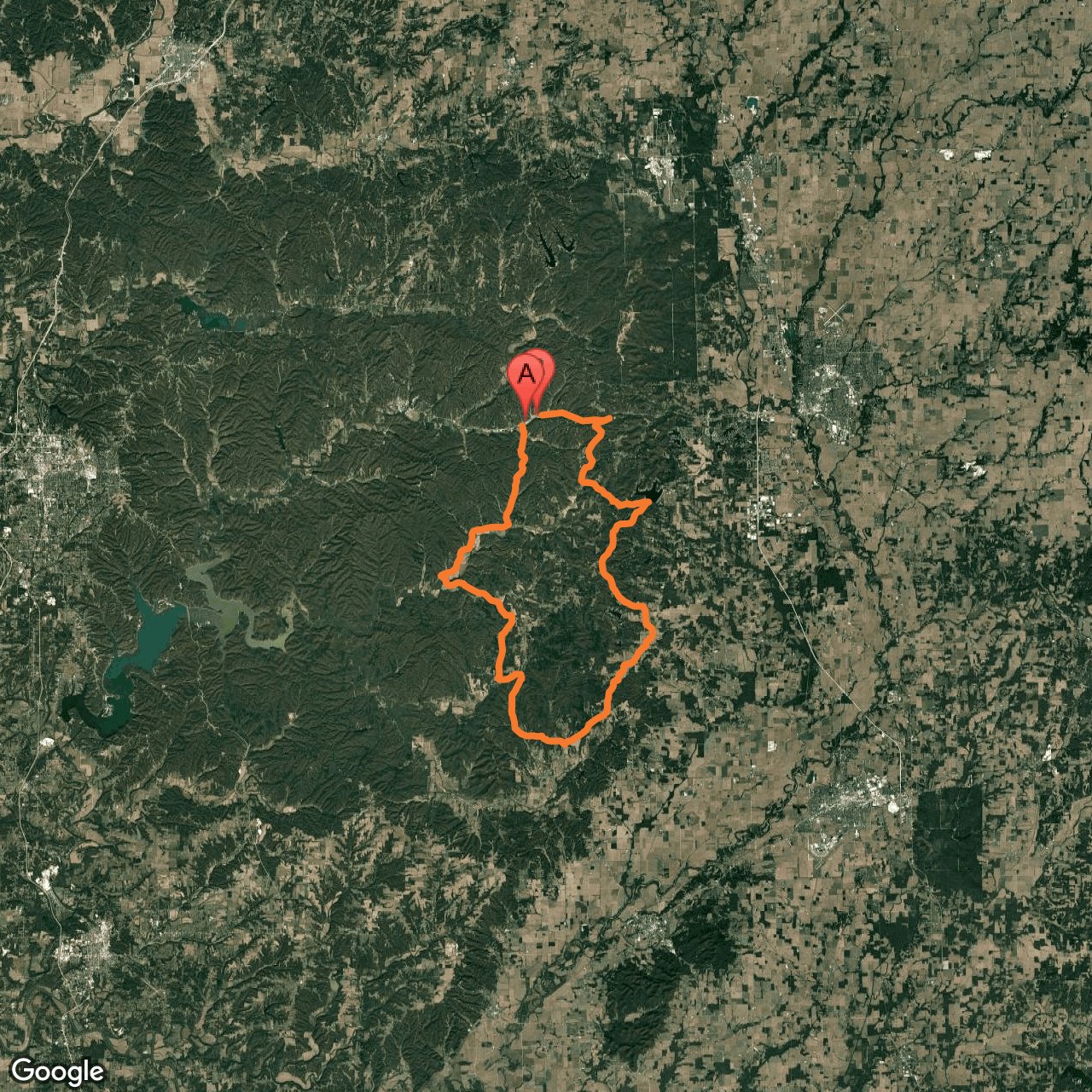
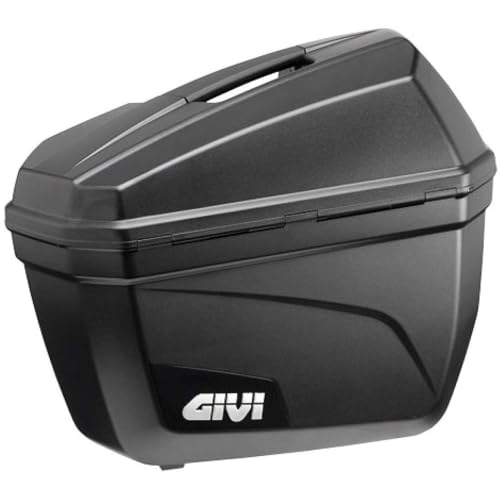
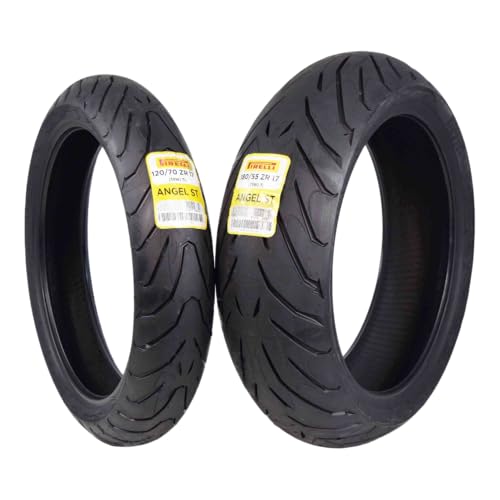
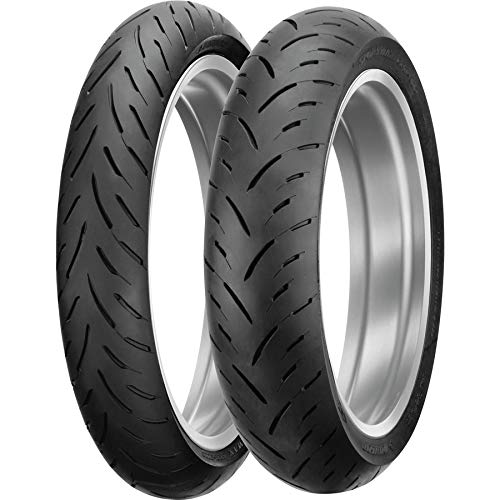

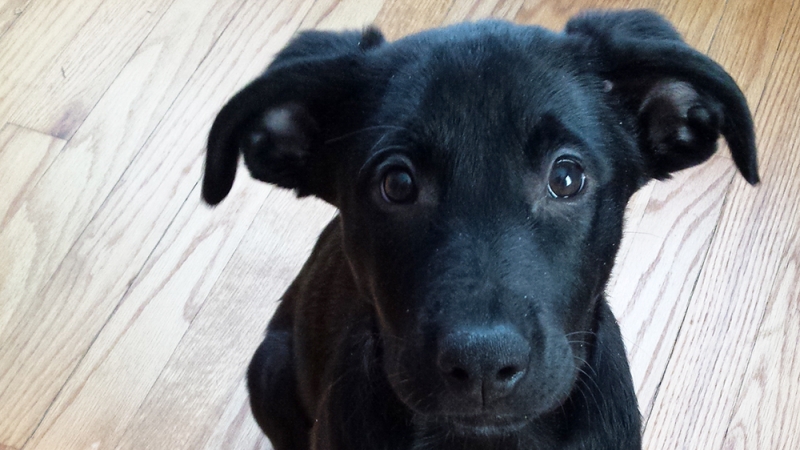

Thoughts gone wild? Write an article!